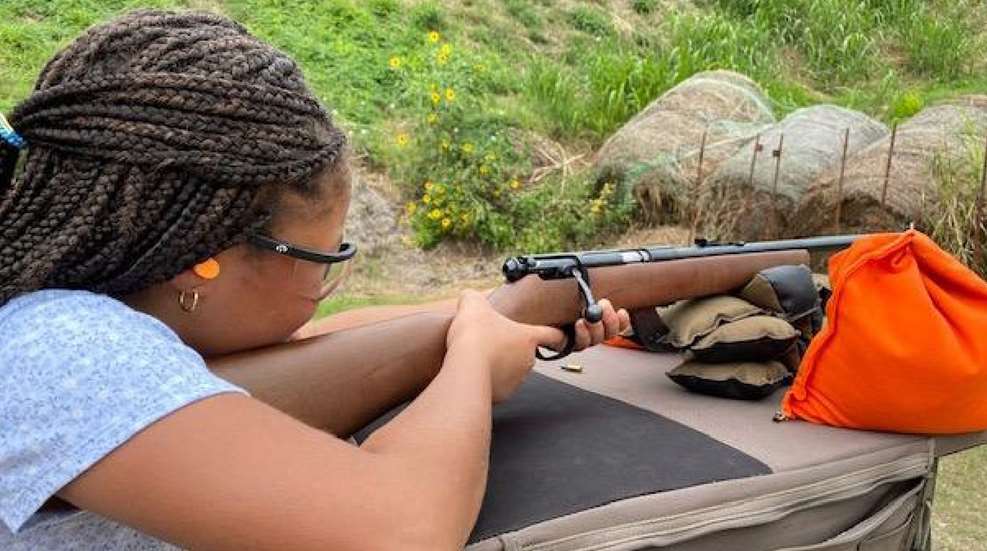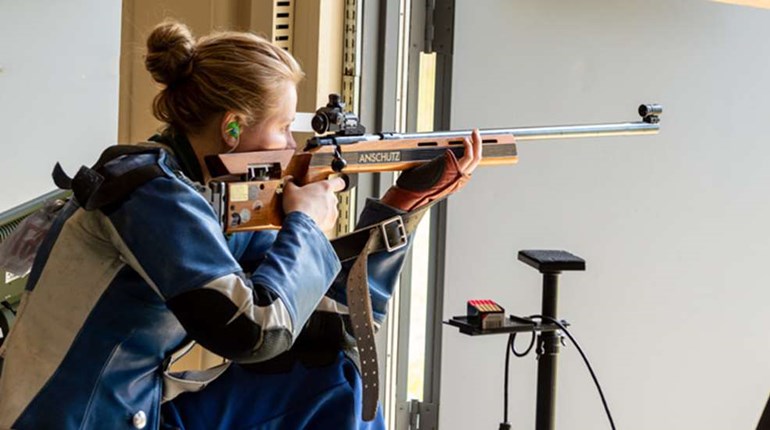
I conduct a lot of NRA Firearms Training courses. Many of my students are not avid shooters, and some are first-time rifle or pistol shooters. Several are Boy Scouts of America (BSA) Leaders who need this training and certification to run ranges during Scout camps. It is a requirement to have Certified NRA Instructors and Range Safety Officers (RSO) present to oversee the safe operations of ranges while teaching firearm safety and handling. This is important because it is these individuals who are teaching our next generation of gun enthusiasts.
The number of young shooters these BSA Leaders might impact over their scouting career is enormous. It is crucial these leaders learn the proper techniques of shooting. To do this, I teach the NRA’s 5 Fundamentals of Rifle and Pistol Shooting. These 5 fundamentals are: (1) Aiming, (2) Breath Control, (3) Hold Control, (4) Trigger Control, and (5) Follow Through. It is essential that all shooters understand what each of these fundamentals are and what they mean.
Aiming
Proper aiming consists of sight alignment and sight picture. To obtain a proper sight alignment, the front sight or post is centered and positioned inside the rear sight. The top of the post should be even with the top of the rear sight. You will notice that the front sight does not completely fill in the rear sight. This is why the front sight must be centered in the rear sight so there is equal space on either side of the front post. The easiest way to remember where the front sight goes in the rear sight is—Equal Light (on either side), Equal Height (across the top).

After you acquire the proper sight alignment, you must acquire a proper sight picture. First, to acquire the proper sight picture, you must know what to focus on. Since your eyes can only focus on one thing at a time, do you focus on the rear sight, the front sight, or the target? You should always focus on the front sight. If possible, the shooter should keep both eyes open. This reduces eye strain and allows the shooter to maintain depth perception. That means everything else in your sight picture will be slightly out of focus. You still should be able to make out what you are shooting at!
By correcting your sight alignment and sight picture, you can place your bullet where you want it to go. As an NRA Pistol Instructor, it is very rewarding when you see your students start to self-analyze and then self-correct. When you can recognize why your bullet did not hit where you wanted it to impact, and then identify what you did wrong, you are on your way to becoming a proficient shooter.
Breath Control
We are living beings. Because we are living and breathing beings, we are always in motion. Your breathing can move the firearm just enough to throw off your shot. Your beating heart as well as your breathing causes motion. To show my students how they unconsciously move I have them extend both arms, palms together as if they were holding a pistol. I then have them watch their hands as they breath. Then I have them hold their breath and watch their hands. What they discover is their hands move regardless of if they are breathing or not. It also shows the longer they hold their breath, their movement increases because of muscle tremors.

To maintain breath control, I have my students take in a deep breath and exhale. Some shooters exhale approximately half of their breath, then hold it, and take their shot. Others prefer to exhale completely to their natural pause, then take their shot. Either method works, as long as you pause your breathing when the shot is taken. Once you fire and while following the other four fundamentals, take another breath, repeat the method that works best for you, and then shoot again.
Sometimes a new shooter takes too long to shoot after holding his or her breath. This is when the muscle tremors start. I tell students to take their finger off the trigger, relax, reset and start over. This is where the instructor must be very attentive to their student. If you let your student wait too long before shooting, they will never master these fundamentals.
Hold Control 
Hold control can be challenging to a new shooter. How tight is too tight? I have heard people describe it as the same grip that you use when holding a hammer and driving a 16d nail. That is correct. But what if your students have never used a hammer and has no idea what a 16d nail is? I have heard others describe the proper hold as if you were firmly holding an egg between your palms without breaking it. That is fine too, but how many individuals have broken an egg by squeezing their palms together?
The handgun needs to be held firmly, but not too firm‑whatever that means! Basically, you want to explain to your student to hold the firearm just tight enough to control the gun. A grip that is too tight will affect accuracy.
The strong, or shooting, hand needs to be placed high on the backstrap of a semi-automatic pistol, but not high enough to interfere with the slide. Revolvers also need to be held high on the backstrap, but not high enough to interfere with the hammer when it is cocked. The fingers on the strong hand needs to wrap around the grip to front strap.
The support hand should cup the bottom of the grip. When using a revolver, the thumb of the support hand should rest on the thumb nail of the strong hand. When using a pistol, the thumb of the support hand should lay alongside and beneath the thumb of the strong hand, parallel to the barrel.
Trigger Control
Trigger control is the method of moving the trigger until the firing pin of the firearm is activated and strikes the cartridge’s primer. This needs to be done while maintaining proper aiming, breathing and hold control. The idea is to engage the trigger with as minimal movement as possible.

The shooting finger, usually the index finger on the strong hand, should be placed inside the trigger guard. The trigger should rest between the first joint and fingertip. To squeeze the trigger, slowly press the trigger while applying continuous steady pressure rearward until the gun fires.
Most instructors say that when the trigger is squeezed and the firearm discharges, it should surprise you. I do not know if I like that instruction. I do not want to be “surprised” by a firearm and I do not want my students to be “surprised” either. I instruct my students to know their firearm well enough that they should know when it should discharge. This is accomplished through practice‑ dry firing at home and live firing at the range.
After the firearm discharges, the shooter needs to slowly release the trigger so that it resets. If there is going to be a follow shot the finger should remain on the trigger and the shooter should start on repeating the proper fundamentals. This is the last fundamental—follow through. If there is not going to be a follow up shot, the finger should be removed from the trigger guard and extended along the frame above the trigger.
Follow Through
Follow through is the continuation of the basic rifle and pistol fundamentals after the shot is fired. This is one of the hardest concepts to teach because it is the combination of all five fundamentals at the same time. Each fundamental is added to the previous. So, when you learn the first fundamental, the student has to think only about that one. When you add the second fundamental, now your student has two things to concentrate on. This continues until the fifth fundamental, follow through, when the student must concentrate on all five at the same time. In other words, once you squeeze the trigger and the round is fired, you are not finished.

If you properly follow through on your shot, you must continue aiming while maintaining your breathing, hold and trigger control. This allows the projectile to exit the barrel before the shooter starts moving the firearm. This also enables the shooter to fire follow up shots if necessary. This is important if you want to be consistent in your marksmanship, shooting a timed course, learning self-defense, or hunting. Without proper follow through your accuracy will suffer, you may not get all your shots off in a timed event, and you increase the chance of a wounding loss when hunting. I have seen new shooters start to raise their head to see where their shot went as soon as they pull the trigger. You could actually see their gun start to move before the trigger is squeezed.
The question is always the same on how long you should maintain your follow through. I tell my students to hold your position until you know the first four fundamentals recover and are maintained. That could be half a second, one second, two seconds or however long it takes to set up for your next shot. The goal through practice is to improve on your recovery time to be able get follow up shots off quicker.
This is precisely why I follow the NRA’s recommendation when teaching the NRA Basic Courses. By using a single action .22 revolver in the pistol class and a bolt-action .22 in the rifle class, I can slow the students down so they can concentrate on the fundamentals. Also, the student can actually go through each step as a separate action so they can experience each fundamental as they perform it.














































